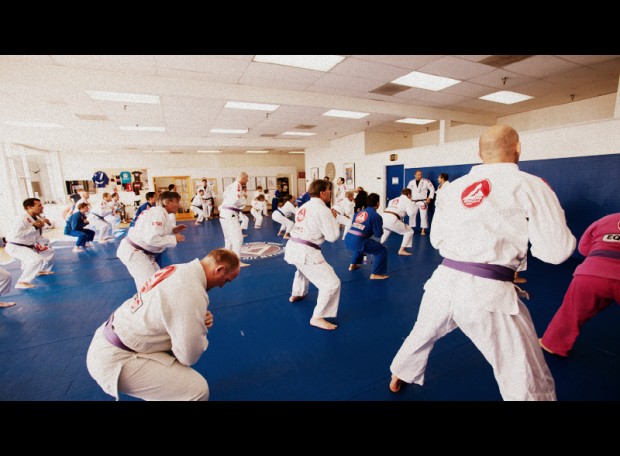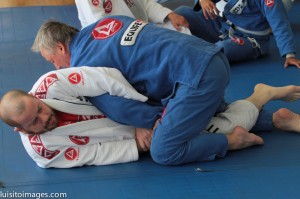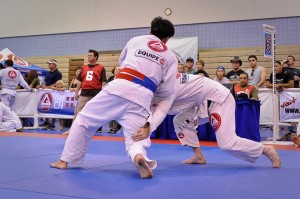For Seniors and Masters: Surviving the Game

BJJ Survival with Proper Defensive Posture
If you are reading this I commend you. It means that you’ve ‘fixed the mental’ and decided to stay on the mat. It’s an intelligent decision which, much like a good financial investment, will have a positive impact on your life at several levels. Then again, as an Old Lion, sound decision-making is a huge part of your personal and professional skillset. Congratulations!
As we’ve already established, being an Old Lion on the mat is fraught with obstacles. Having to train with younger, more aggressive partners is the main one. In our struggles with the younger elite, we often find ourselves in bad positions where we are vulnerable to further attack. For most beginners, losing the battle for position is synonymous to losing the match. It’s easy to see why, and to a certain extent to sympathize, but it must be remembered that the aforementioned is not always true.
At the Core of Jiu-Jitsu is Survival
Being in a bad position, like being mounted for example, is a major setback in a match. Keep that in mind; it’s a setback. It is by no means a defeat. Yes, you may be down on points. Yes, you are now very vulnerable to attack, but it’s not the end. If you understand the concept of ‘fixing the mental’ then you understand that bad positions are part of the game. Furthermore, you understand that just as there are ways to get into bad positions there are also ways to get out of them. It’s a step-by-step process. And the first step to escaping from a bad position is surviving the onslaught that said position makes possible.
down on points. Yes, you are now very vulnerable to attack, but it’s not the end. If you understand the concept of ‘fixing the mental’ then you understand that bad positions are part of the game. Furthermore, you understand that just as there are ways to get into bad positions there are also ways to get out of them. It’s a step-by-step process. And the first step to escaping from a bad position is surviving the onslaught that said position makes possible.
I’d like to paraphrase something that one of my coaches, 2x world champion Brandon Mullins, often speaks on here. What he has to say on the subject of being in bad positions sums up as this: Once you are in a bad position, mount for example, you have a 3-second window for escape, afterwards your opponent will receive points. If this happens, survival should be your first order of business because your opponent has already received points AND established position. They aren’t going to win any more points for controlling you, so what’s the rush? Professor Mullins makes a very strong point that one cannot escape a bad position if they cannot first survive that position.
This of course begs the question: How do we survive a bad position? The answer is with proper defensive posture.
The saying in Brazil is that posture solves everything. I’ve found this to be true a million times over. The time spent continually learning proper offensive, and especially defensive posture, has paid off huge dividends. As Old Lions we live for big dividends so something like this is right up our alley. It’s a sound investment and a smart choice because understanding defensive posture has a three-fold effect: submission defense, energy conservation, and the facilitation of escapes. Additionally, when worse has come to worse and my opponent is simply too much for me I have, at the very least, made it out of the match unscathed.
 So, how do we know if our defensive posture is bad? The answer is simple: Once you are in a bad position, are you getting submitted easily? Is it easy for your opponent to further advance his position? If the answer to either of these questions is yes, then chances are your defensive posture could use some improvement. So how do we fix it? There are several answers to this question:
So, how do we know if our defensive posture is bad? The answer is simple: Once you are in a bad position, are you getting submitted easily? Is it easy for your opponent to further advance his position? If the answer to either of these questions is yes, then chances are your defensive posture could use some improvement. So how do we fix it? There are several answers to this question:
1.) Attend fundamentals classes at your academy. Fundamentals classes are an invaluable resource and their curriculum is designed to address proper posture. They also center their specific training on correcting deficiencies.
2.) Ask your instructor. Don’t be embarrassed. As Old Lions we know that a question isn’t stupid if we don’t know the answer. Besides, your instructors are there to help and are usually happy to do it. I would also advise here to go an extra step and schedule a private lesson if you are having a lot of difficulty. The prices are reasonable and the insight you will receive will make it well worth the time and money. Think investment.
3.) This one is something I do personally, but I’ve found it helps. Once I began to understand defensive posture, I developed an internal checklist for when I was in a bad position. I would ask myself questions: Where are my hands? Are my arms close to my body? Where are my legs? Is my neck protected? Can my opponent advance his position easily from here? I had an internal dialogue where I answered these questions and compared my answers to the instructions I had received. If anything was amiss I corrected it.
Now I realize that #3 takes time but I’ve found that constant repetition over the years has made me lightning fast. It has also served as an aid to training my reflexes. When a bad position is impending, I instinctively go to my defensive posture.
Proper defensive posture is essential to surviving the onslaught a bad position brings. It helps build that rock-solid defense we desire, which gives us peace of mind and the confidence to start developing the offensive part of our game. So do yourself a favor, make another sound investment and train proper posture, both offensive and especially defensive. Remember, it solves everything.
Contributing Writer
Caston Nathaniel
Purple Belt, Gracie Barra Webster, TX.

Comments are closed.